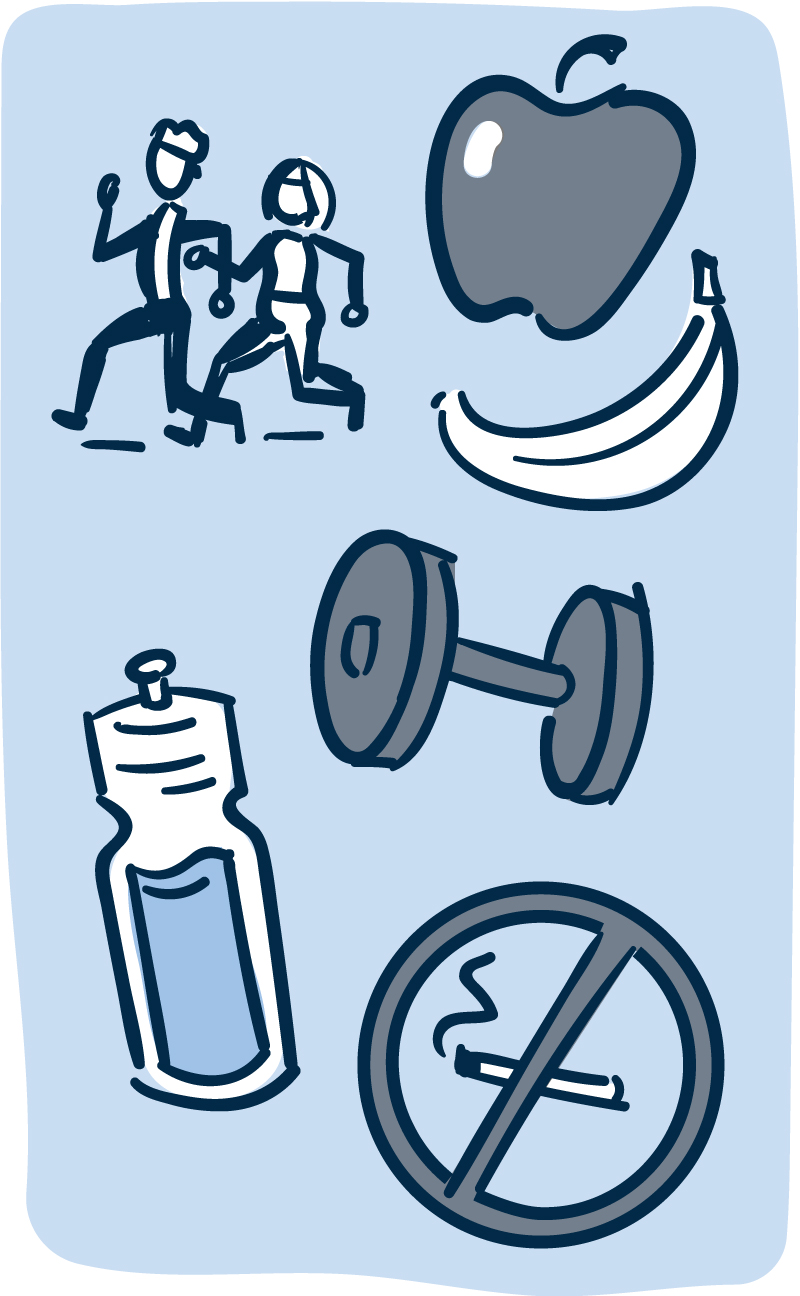Minding Your Metabolism
Can You Avoid Middle-Age Spread?

As you age, you may notice you have less muscle and energy and more fat. Carrying those extra pounds may be harming your health. It’s easy to be confused by advice about diet and exercise, but they’re key to avoiding weight gain as you get older. As you move through your 30s, 40s, 50s, and beyond, you can take steps to help fight the flab that can come with age.
Your Chemical changes in the body that create the energy and substances you need to grow, move, and stay healthy. metabolism changes as you get older. You burn fewer calories and break down foods differently. You also lose lean muscle. Unless you exercise more and adjust your diet, the pounds can add up. Middle-age spread can quickly become middle-age sprawl.
“At some point, everyone loses muscle mass as they get older and gains abdominal fat,” says NIH’s Dr. Mark Mattson, an expert on aging and exercise. The so-called couch-potato lifestyle is the main culprit behind middle-age spread. “Over-eating and leading a Sitting or lying down while you’re awake. sedentary lifestyle can speed up age-related changes in metabolism,” Mattson says.
One key player in age-related changes is a chemical called leptin, which helps your brain tell you to stop eating. Leptin signals don’t work as well as you get older, so you might continue to feel hungry even after you’ve eaten. Obesity makes leptin even less effective.
“There’s a reward part to everything you eat,” says Dr. Josephine M. Egan, an NIH expert on diabetes and aging. “You get the taste of the food. You feel good. Normal-weight people will satisfy cravings by having a small amount of what they crave.” As both the years and the pounds add up, however, you may need to eat more of what you crave to get the same pleasant sensation.
Both aging and obesity can also bring changes to the way your body processes glucose—the sugar your body makes from food and uses for energy. These changes can lead to diabetes, which raises your risk for heart disease, blindness, amputations, and other conditions.
“Obesity increases the risk, and reduces the age of onset, for many diseases of aging,” Mattson says. “Over the long-term, even our brains are affected. Emerging evidence suggests that long-standing diabetes and obesity can lead to changes in brain cells that make them vulnerable to aging.”
As you move beyond your 50s, you’ll probably need fewer calories. But it’s also important to maintain proper nutrition, so don’t skimp on healthy foods. Weighing too little and weighing too much are each linked to poor health, especially in older people. For tips about healthy eating after age 50, visit NIH’s What's on Your Plate? Smart Food Choices for Healthy Aging.
Exercise and moving are also important. “It doesn’t matter what your age is; physical activity is good for you,” says Egan. Be sure to talk with your health care provider about safe ways to adjust your activity patterns as you get older. If you have a specific health issue that you’re concerned about—such as arthritis or a recent surgery—ask for tips to help you exercise safely. Work together to choose activities that are best for you.
Focusing on physical activity and healthy eating are the keys to avoiding middle-age spread and the health problems that can come with it. NIH’s Go4Life exercise and physical activity campaign is designed especially for older adults. For tips to help you get started, make a plan, set goals, and more, visit go4life.nia.nih.gov.
NIH Office of Communications and Public Liaison
Health and Science Publications Branch
Building 31, Room 5B52
Bethesda, MD 20892-2094
Contact Us:
nihnewsinhealth@od.nih.gov
Phone: 301-451-8224
Share Our Materials: Reprint our articles and illustrations in your own publication. Our material is not copyrighted. Please acknowledge NIH News in Health as the source and send us a copy.
For more consumer health news and information, visit health.nih.gov.
For wellness toolkits, visit www.nih.gov/wellnesstoolkits.




